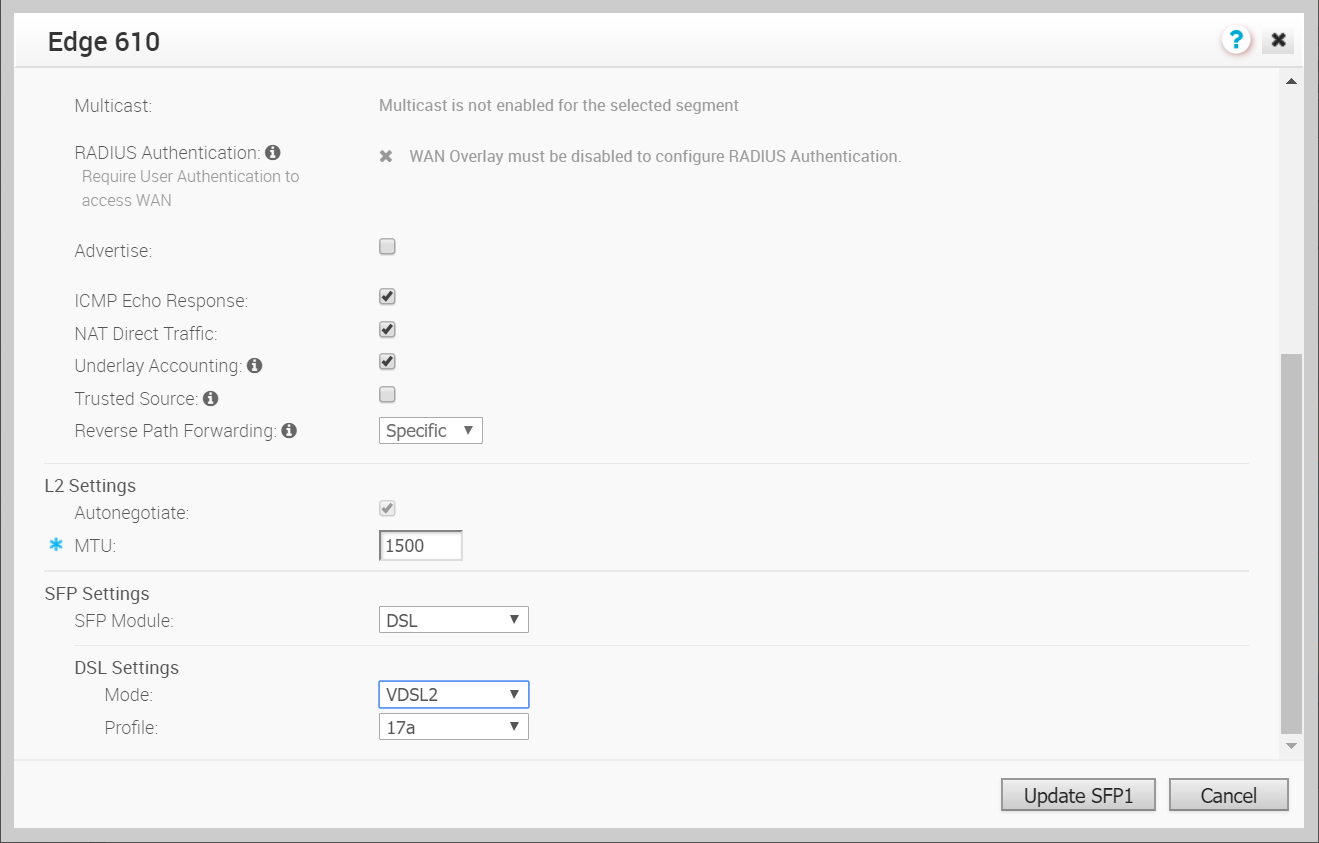Support is available for Metanoia xDSL SFP module (MT 5311). It is a highly integrated SFP bridged modem, which provides a pluggable SFP compliant interface to upgrade existing DSL IAD or home Gateway devices to higher bandwidth services.
The Metanoia xDSL SFP module (MT 5311) can be plugged into Edge 610 device SFP slot and used in ADSL2+/VDSL2 mode. This module must be procured by the user. Configuring DSL is only available for the 610 Edge device.
Configuring SFP
Click the SFP interface that the specific DSL module is plugged into. When the SFP is plugged in, the slot name will display as SFP1 and SFP2.

To Configure SFP:
- Click the Edit link in the Actions column, as shown in the image above.
The Interface SFP1 dialog for the Edge device (Edge 610 in this example) appears as shown in the image below.

- The Override Interface checkbox must be checked to configure DSL Settings.
- Check the Interface Enabled checkbox.
- In the SFP Settings area, there are two options available from the drop-down menu, Standard and DSL. Choose DSL as the SFP Module as shown in the image below.

- In the DSL Settings area, choose the Mode and Profile settings as described below (see the DSL Settings table for a description of the available options):
- In the Mode drop-down menu, choose one of two options: VDSL 2 or ADSL2/2+. If you choose ADSL2/2+ as a Mode option, configure the following below.
- Choose a PVC number from the PVC drop-down menu (0-7).
- Enter a VPI number or use the up/down arrows to choose a number in the VPI text box.
- Enter a VCI number or use the up/down arrows to choose a number in the VCI text box.
- Enter a PVC VLAN number or use the up/down arrows to choose a number in the PVC VLAN text box.
- In the Profile drop-down menu, choose either 30a or 17a from the Profile drop-down menu.
- In the Mode drop-down menu, choose one of two options: VDSL 2 or ADSL2/2+. If you choose ADSL2/2+ as a Mode option, configure the following below.
- DHCP Server Type .
- Click the Update SFP1 button.
Troubleshooting DSL Settings
DSL Diagnostic Test: The DSL diagnostic test is available only for 610 devices. Running this test will show the DSL status, which includes information such as Mode (Standard or DSL), Profile, xDSL Mode, etc. as shown in the image below.
